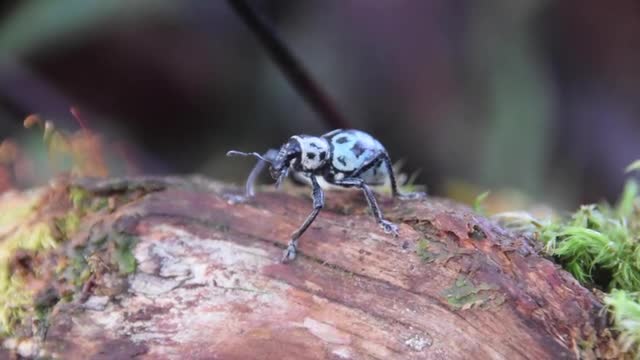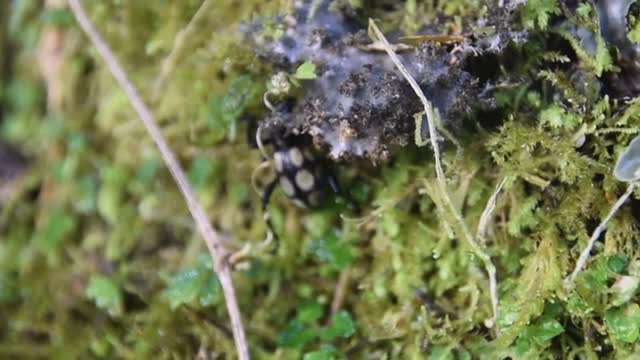MindanaoMimics
There’saspeciesofjewelweevilcalledPachyrhynchusreicherti.Itsblackandspottedbodyhasauniquepattern.Itselytraarefusedtogether.Itcannotfly.Mostpredatorsknowtostayaway.It’stootoughtobitethrough.Itsstrongcolorsandmarkingsindicatethatitwouldbeawasteofahungrypredator’s time.
WhenCabrasfirstspottedMetapocyrtuswillietorresi—anewspecies—shemistookitforPachyrhynchusrecherti.Ithassimilarcolorsandmarkings.Ithastough,fusedelytra.Neitherbeetlewouldmakeagoodmeal.So,whywasone“copying”
the other?
It’sallabouteducatingthepredators,shesays.Warningcolorsworkbecausepredatorslearnthattheyrepresentfoul-tasting,dangerous,orevenpoisonousoutcomes.Overmanygenerations,predatorslearntostopeatinganythingthatlooksacertain way.
Inscience,thisphenomenoniscalledMüllerianmimicry.That’swhentwoequallyharmfulthingshaveevolvedtoresembleeachother.Byhavingsimilarcolorsandpatterns,theybothstaysafefrom predators.
Itdoesn’tendthere.There’sathirdbeetletothisstory:Doliopsdaugavpilsi.Thisbeetlelooksalotliketheothertwo.Exceptthisbeetleisnotajewelweevil.It’salonghornbeetle.Andthoughitmaylooktoughliketheothertwoweevils,itisn’t.Ithasasoftshell—onethatpredatorscouldeasilybite through.
Pachyrhynchus reicherti
Metapocyrtus willietorresi
Byhavingcolorsandpatternssimilartotheweevils,thelonghornstayssafe.ThisiscalledBatesianmimicry.Inthisformofmimicry,anedibleinsectwithfewdefenseslookslikeadangerousone,sopredatorsstay away.
Duringherfield work,Cabrasstartedfindingalotofbeetlesthatlookedsimilartoeachother.“Igotfooledmanytimes,”says Cabras.
HereareafewexamplesofthebeetlesCabrasfoundduringherfieldworkonMindanao.Themimicsstronglyresembletheir models.
MODEL
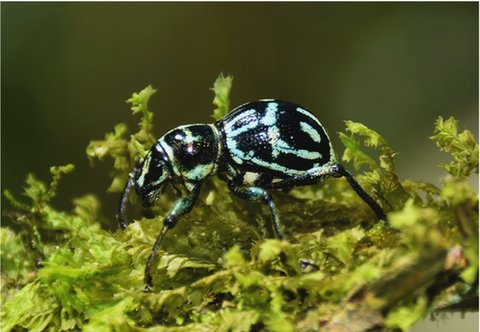
Model: Metapocyrtuskitangladensis
MIMIC
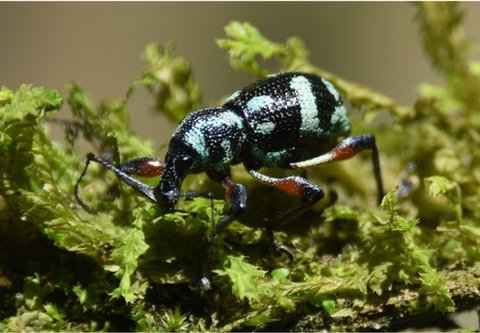
Mimic: Coptorhynchus sp.
MODEL
Model: Pachyrhynchustikoi
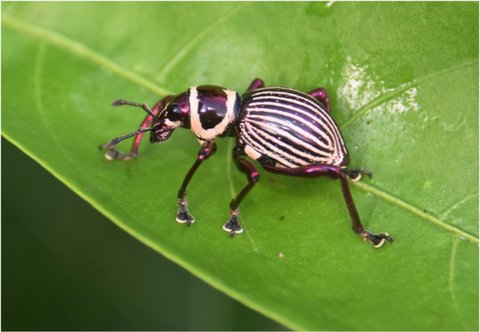
MIMIC
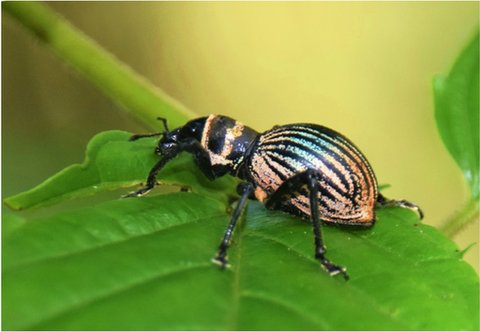
Mimic: Metapocyrtussp.

Totestahypothesis,Cabrasusedfakebeetlesmadeofmodelingclay,liketheoneshownhere,toseeifpredatorswouldreacttothebeetle’swarning colors.
TestingaTheory
Cabrasbegantowonderifshewastheonlyonebeingfooled.Shewantedtotryanexperiment.Sheandherteammadefakebeetlesoutofmodelingclay.ThefakebeetleslookedlikePachyrhynchusrecherti.Shesetthemoutinplaceswherethesebeetleswerecommon.Shealsosetthemoutinplaceswheretheywerenot.Thenshesetupcamerasto see what would happen.
Wherethebeetleswerecommon,predatorsavoidedtheclay beetles.Theyhadlearnedwhatthosecolorsandpatternsmean.Intheplaceswherethebeetleswerelesscommon,morepredatorsattemptedattacks.Thesepredatorshadnotyetlearnedtostay away.
Cabrasstillhasmanyquestionsshewantsanswersto,andtherecouldbemanymorenewspecieswaitingtobediscovered.Whileherworkmustbecarefulandmeticulous,CabrassaysalotoflandonMindanaoisbeingclearedawayforfarmingand houses.

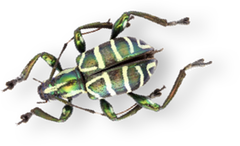
acamera trap
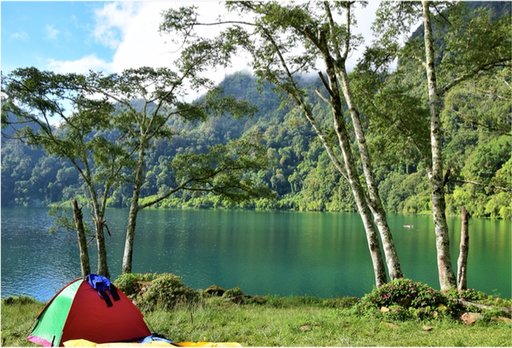
InMindanao,therecouldbemanynewspeciesto discover.
“It’sreallyscaryforme.Asataxonomistandconservationist,Ireallydohopetoseethesebeetlesintheirnaturalhabitats.Butinfiveto10years,I’mnotreallysureifIgobacktothatarea,ifIcanstillfindthosespecies.Thesmallareawherethefournewbeetleswerefound?Itisslatedtobeclearedsoonfor farmland.”
Withasenseofurgency,Cabrasisdoingherbesttodiscover,observe,anddocumentthebiodiversitythatsheseesinMindanao.Shethinks“everytaxonomisthasaspecialeye.”Andfornow,Cabras’eyesaretrainedon weevils.
